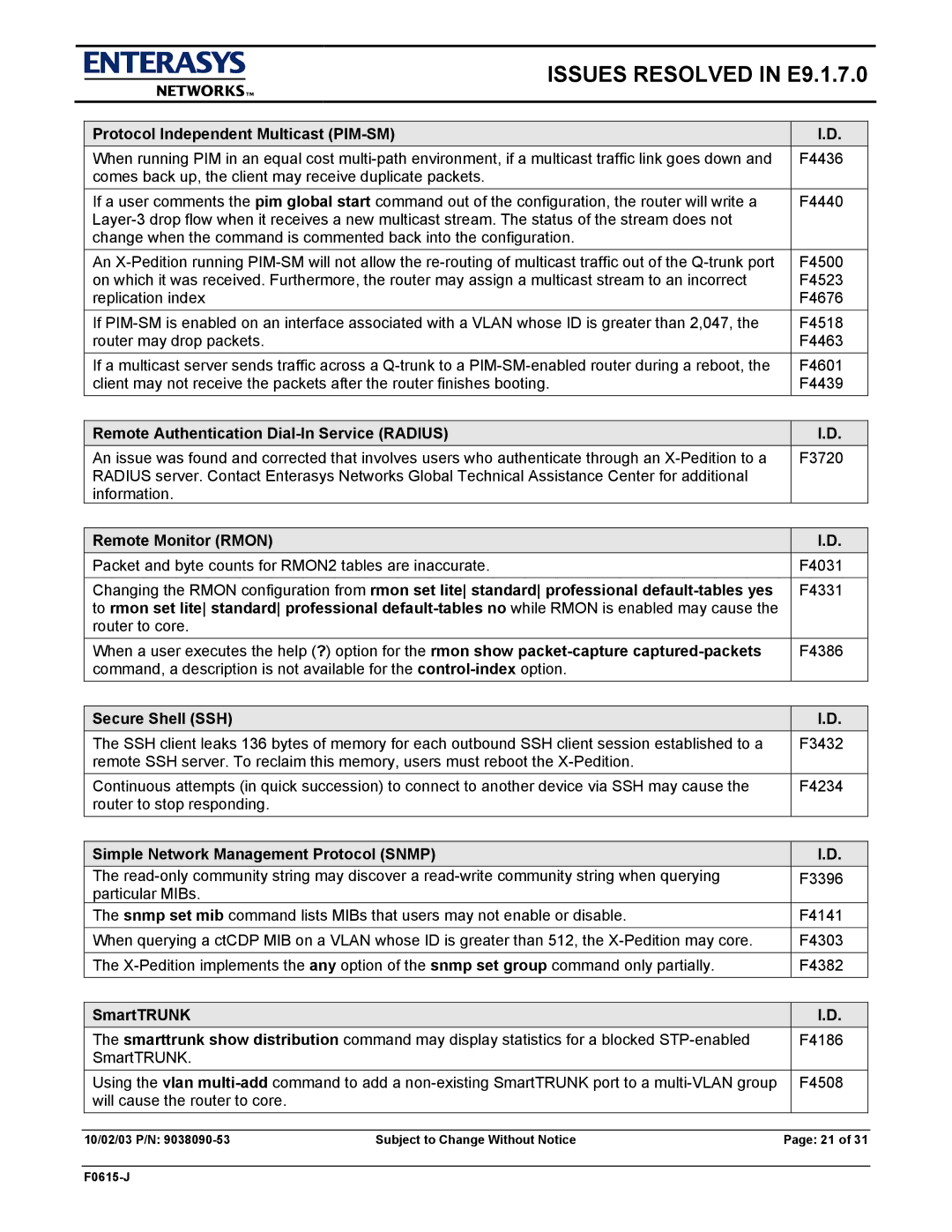
ISSUES RESOLVED IN E9.1.7.0
Protocol Independent Multicast | I.D. |
When running PIM in an equal cost | F4436 |
comes back up, the client may receive duplicate packets. |
|
If a user comments the pim global start command out of the configuration, the router will write a | F4440 |
| |
change when the command is commented back into the configuration. |
|
An | F4500 |
on which it was received. Furthermore, the router may assign a multicast stream to an incorrect | F4523 |
replication index | F4676 |
If | F4518 |
router may drop packets. | F4463 |
If a multicast server sends traffic across a | F4601 |
client may not receive the packets after the router finishes booting. | F4439 |
| Remote Authentication |
| I.D. | |
| An issue was found and corrected that involves users who authenticate through an |
| F3720 | |
| RADIUS server. Contact Enterasys Networks Global Technical Assistance Center for additional |
|
| |
| information. |
|
|
|
|
|
|
|
|
| Remote Monitor (RMON) |
|
| I.D. |
| Packet and byte counts for RMON2 tables are inaccurate. |
| F4031 | |
| Changing the RMON configuration from rmon set lite standard professional |
| F4331 | |
| to rmon set lite standard professional |
|
| |
| router to core. |
|
|
|
| When a user executes the help (?) option for the rmon show |
| F4386 | |
| command, a description is not available for the |
|
| |
|
|
|
|
|
| Secure Shell (SSH) |
|
| I.D. |
| The SSH client leaks 136 bytes of memory for each outbound SSH client session established to a |
| F3432 | |
| remote SSH server. To reclaim this memory, users must reboot the |
|
| |
| Continuous attempts (in quick succession) to connect to another device via SSH may cause the |
| F4234 | |
| router to stop responding. |
|
|
|
|
|
|
| |
| Simple Network Management Protocol (SNMP) |
| I.D. | |
| The |
| F3396 | |
| particular MIBs. |
|
|
|
| The snmp set mib command lists MIBs that users may not enable or disable. |
| F4141 | |
| When querying a ctCDP MIB on a VLAN whose ID is greater than 512, the |
| F4303 | |
| The |
| F4382 | |
|
|
|
|
|
| SmartTRUNK |
|
| I.D. |
| The smarttrunk show distribution command may display statistics for a blocked |
| F4186 | |
| SmartTRUNK. |
|
|
|
| Using the vlan |
| F4508 | |
| will cause the router to core. |
|
|
|
|
|
|
|
|
| 10/02/03 P/N: | Subject to Change Without Notice | Page: 21 of 31 | |
|
|
|
|
|
|
|
|
| |
